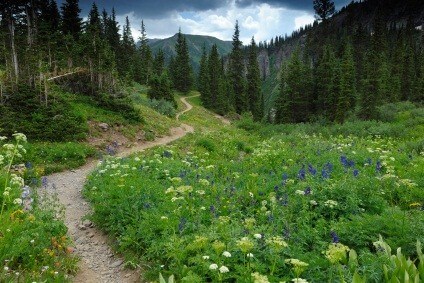As the world’s population exponentially explodes, demand for additional living space and resources for survival greatly increase. To supply this demand, we compromise the integrity and survival of the natural world and existing ecosystems around us. As a result, the earth and wild nature bears the weight and suffers the most damage in order to make way for its human counterparts. Tropical rainforests are demolished, natural plant and animal ecosystems are threatened, and the quality of the atmosphere steadily depreciates. And as we continue to degrade the health of the world around us, we come dangerously close to threatening the quality of our own existences as a human race.
Protecting the integrity and quality of our world’s wilderness and natural plant and animal habitats is a guaranteed way of ensuring that seed diversity and biodiversity remains high and thriving. Large and small areas of protected wilderness are teeming with all sorts of plant and animal species not found in every part of the world. And even in these segmented and isolated areas of protected wilderness, a larger number of plant species and high level of seed diversity equates to an increased variety of crops. And in these areas, the more species of plants and animals that are able to thrive without interference from human destruction and disturbance, the more likely these species are able to sustain and remain healthy, which allows these ecosystems to withstand and survive through all sorts of natural or human caused disasters and devastation.
The biodiversity of plant life in the wilderness also plays a significant role in the quality of our gradually dying atmosphere. These areas of protected wilderness help keep the planet’s atmosphere balanced and alive and we slowly depreciate its quality through our ever increasing levels of carbon emissions. This relationship between wilderness seed diversity and the quality of the atmosphere is a symbiotic one, for as the atmosphere depreciates as does the quality and survival rate of plant and animal diversity. And in times like these in our human history, when people around the world are suffering from impoverished economic circumstances, lack of access to clean water, and the inability to feed themselves and their families, the drive to protect the sanctity of our world’s wilderness has never been more felt.
The wealth of plant life that the wilderness has to offer is far greater than what any farm could produce and harvest. And ensuring the protection and survival of the world’s wilderness and plant life guarantees the survival of domesticated and farmed plants and crops. Thus, although not every species of plant found in the wilderness is capable of being consumed by humans and is seemingly perceived as useless, these plants maintain the balance of the ecosystems they are found in and are necessary to sustain high levels of seed and plant diversity. Whether deemed useful or useless to the average human, every plant plays its part in the functioning of a healthy, wild ecosystem. And the seed diversity found in the wilderness is integral to the sustaining of the global food supply.
Dana Livingston is a writer for a culinary institute website where you can browse schools and the latest trends in the culinary arena.


Why are we storing billions of seeds?
Find out at
https://www.ted.com/talks/lang/eng/jonathan_drori_why_we_re_storing_billions_of_seeds.html